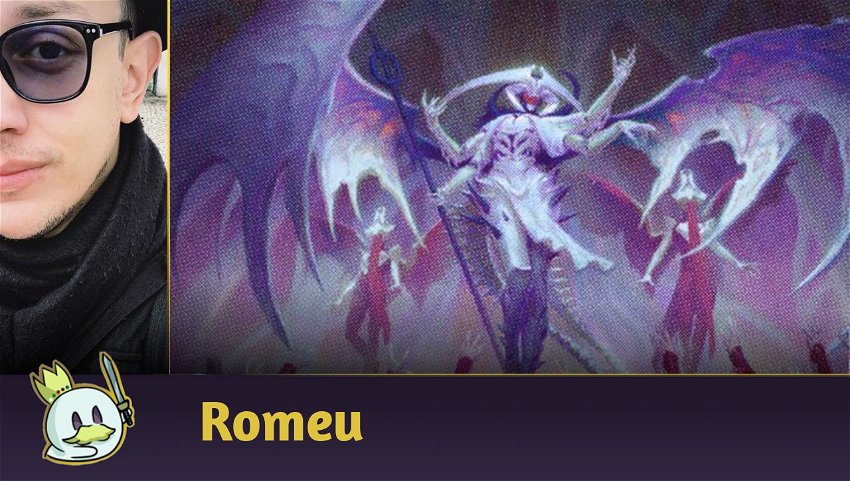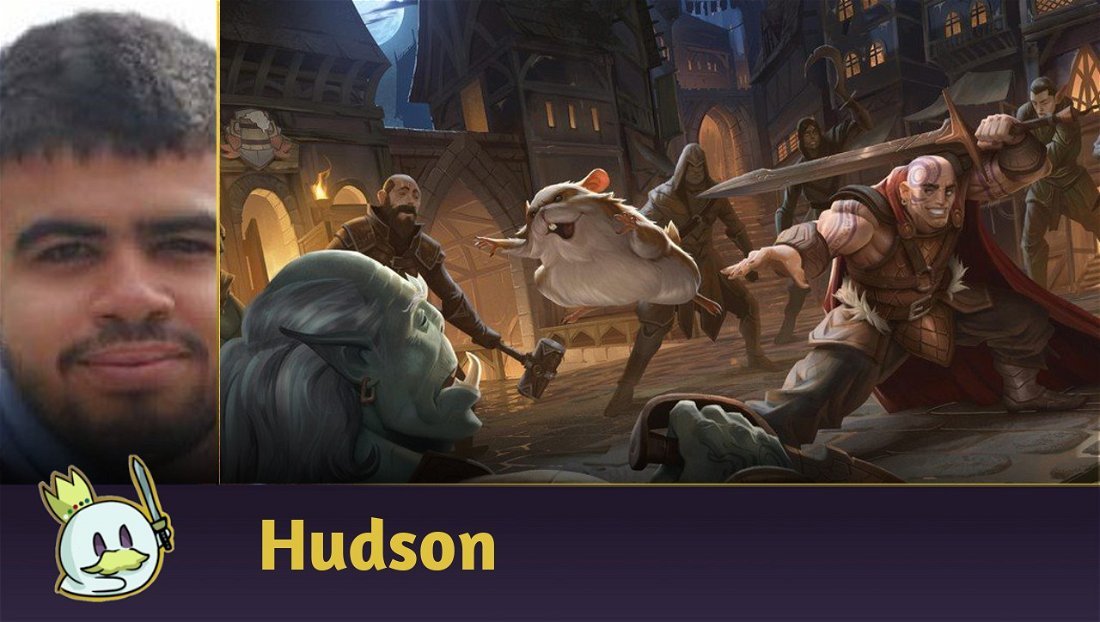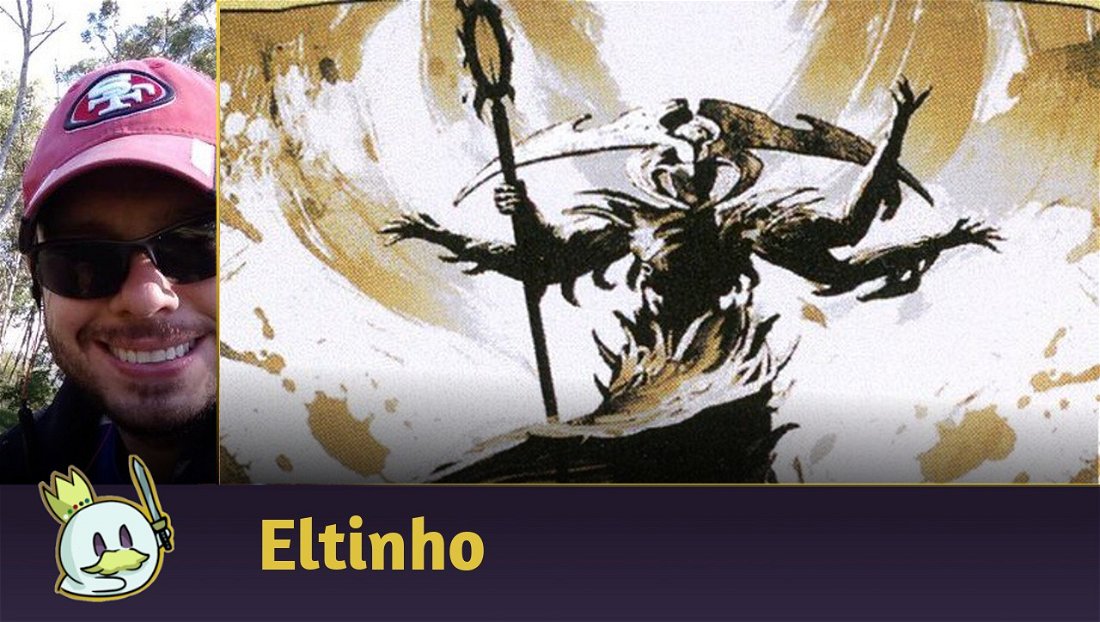Phyrexia: All Will be One is upon us! And one of the most discussed cards in its first week in the competitive universe is, ironically, a new version of the most famous commander of all time:

Atraxa, Grand Unifier is generating a stir in every format for the qualities it provides the moment it enters the battlefield, which means that no one is genuinely interested in paying its mana cost, but at finding the most efficient means of putting it directly into play. Atraxa's body and abilities are so efficient that there are even debates about the possibility of the creature replacing the dreaded Griselbrand in the Reanimator lists in Legacy!
Things are no different in Pioneer, and players are exploring the most varied ways to use the new creature in the format. In the next articles focused on the format, and today we'll elaborate on the most hyped combo of the last week: Atraxa Neoform or, as I christened this version, Atraxa Soulflayer.
Decklist
The idea for this list originally came from a video on The EPIC Storm channel, and the central plan of it is to put enough cards into the graveyard to cast a creature with Delve on the second or third turn, then cast Neoform and thus look for Atraxa, Grand Unifier which, in addition to its 7/7 body and its keyword soup, will also guarantee an average of four more cards in its controller's hand, allowing them to continue with their game plan even if the creature is destroyed.

However, as players in my local community know, I'm a huge fan of Soulflayer, so much so that I've already published one of my tests with the card in an article, and Atraxa is undoubtedly the type of creature Soulflayer wants to feed on because it grants four relevant keywords to our creature, making it a decent threat in middle of combat.
But of course, that comes with a cost: Soulflayer costs 

What are the advantages of playing with Soulflayer?

As mentioned above, Atraxa, Grand Unifier is the ideal creature to feed Soulflayer because it will have all of her keywords, guaranteeing a 4/4 with Flying, Deathtouch, Vigilance, and Lifelink. Also, if you sacrifice Hooting Mandrills to Neoform, Soulflayer will also have Trample, and while that's not as impressive as feeding a Zetalpa, Primal Dawn to it, it is enough to turn it into a threat.
Many people tend to play Soulflayer to break it, but here, it's a good support piece and an excellent backup plan for a strategy that already seeks to break the fundamental rules of a game by cheating on mana costs and, given that Atraxa does not protect itself, securing an additional, efficient threat is a reasonable option. In addition, the inclusion of Soulflayer allows us to play with fewer copies of Tasigur - which is legendary - and still increase our amount of creatures with Delve to ten or even twelve, if necessary.
That is, Soulflayer, in addition to collaborating with the base plan proposed by the deck, guarantees a "fair" plan B where it becomes additional copies of Atraxa in combat, and despite its body being significantly smaller, it's a five-turn clock that guarantees an extra breath thanks to Lifelink.
Maindeck

Your Delve Spells. The combo is not possible without them, and your goal is to have either one of them and Neoform or Eldritch Evolution in your hand. In addition, each of them has an individual quality and are relatively decent at proposing a fair game: Hooting Mandrills has evasion and 4/4 is a good body, Tasigur survives in combat against Bonecrusher Giant and other similar creatures, and takes a lot of effort to kill through damage, and Soulflayer can become a threat on its own with just one Atraxa in your graveyard.
The 3-3 split between Tasigur and Soulflayer is because I don't want too many copies of either, but I want a high enough amount to find Tasigur with Contingency Plan and Soulflayer with Atraxa to keep my gas running.

The other half combo.
Neoform and Eldritch Evolution serve to fetch Atraxa, which when it comes into play, will reveal cards from the top of your deck, and you will probably have enough pieces or means to dig for the combo again, unless you are very unlucky. From this list, it's natural that when it comes into play, you'll "draw" three to four cards.
Despite Atraxa being our main wincondition, we also have Tyrranax Rex as an efficient answer against archetypes that rely on targeted removals to deal with our creatures. We have a copy on the Maindeck and one on the Sideboard because we normally want to fetch more than one Atraxa to continue the loop (and also to feed Soulflayer), but a 2-2 split on the Maindeck is acceptable.

We intend to close the combo, and we hope to do it in a few turns. So, we traded a classic cantrip package and draw spells like Consider and Strategic Planning for cards that, while not offering a draw, allow us to dig deeper into our deck to find the right pieces.
This is one of the points on the list that I feel less confident about, as despite this speeding up our plans too much, it also opens up moments in which we cannot execute the combo, even with available mana because we lack the means to draw the card that is now in the top of your deck. Maybe Strategic Planning and even Curate deserve some attention to ensure your resources.

To protect our threats, we rely on Thoughtseize to not only remove a disruption, but also to be aware of how and when we have a better opportunity to close the combo, in addition to Stubborn Denial, which works as a Negate if any of our creatures are in play, essential to protect Atraxa or any other threat.

Unfortunately, our deck is very mana greedy: we want 





Sideboard

Eight two-mana removals might seem like overkill, especially given that we want to destroy the same permanents with Abrupt Decay and Assassin's Trophy, but I think Atraxa Neoform does very broken things when it works unimpeded and manages to win the game in different states if you manage to get out of complicated situations.
Eight removals also means dealing with more resolved hates like Rest in Peace, Grafdigger's Cage and Unlicensed Hearse, while also ensuring a more resilient game against aggressive decks with built-in disruption, like Humans and Spirits.

The second part of the Sideboard is made up of protections for our resources: Leyline of Sanctity is not a piece I really like in decks like ours because it increases the amount of bad draws, but Thoughtseize is one of our biggest enemies in the format, given that a well-placed discard can create a delay of two or more turns in our strategy.
Dispel is an efficient answer to Instant-Speed removals and counterspells in Neoform, and I can imagine situations where having more copies of it would be a suitable option in the one or two Abrupt Decay slot.

The second Tyrranax Rex is for Midrange or Control, where Atraxa can be easily killed, and we'll have trouble coming back to the match later if we don't have the full combo in our hand again. On these occasions, the Phyrexian dinosaur does an excellent job of pressuring the opponent.
Mulligan and Postures
Ironically, the most complicated part of this deck is Mulligan: understanding when you have the right or enough pieces to execute your game plan is very difficult when everything seems dedicated to a single goal, and where nothing works if this goal is not reached. The posture basically boils down to understanding the timing with which you can combo and what you need to play around against.

The ideal hand would look something like this, being variable regarding creatures or mill spell. This combination allows you to cast Thoughtseize on the first turn, Otherworldly Gaze on the second, and perform the combo on the third. You can also choose to reverse the spell order in this situation to ensure a safer opportunity to play Neoform unimpeded, but at the risk of your opponent casting their Thoughtseize and removing your combo.

Despite having all the necessary pieces, this hand above is risky if you're up against an interactive deck: you don't have a first-turn option (but you should play Darkslick Shores for the Stubborn Denial to deal with Thoughtseize), your second turn is similarly slow, and you lack the means to take advantage of Soulflayer if Contingency Plan finds nothing.
Can we still keep it? Yes, but the ideal play will involve casting Soulflayer on the third turn with Stubborn Denial as a backup to sacrifice it with Eldritch Evolution on the fourth, which can be very slow in certain matchups.

Here, you have a combo piece, disruption, and two lands. You will need to find one more piece and the third land with Otherworldly Gaze and Contingency Plan. This is one of the situations where, perhaps, you don't care so much about discards because you'll already have to look for other pieces with your spells, and it will take some time to execute the combo. So save it for a more propitious time and focus on finding the third land and a Delve spell.
This is a keep if you know your opponent isn't going to pressure you. If you're up against aggro, it's a bad idea to hold a hand that requires two perfect turns to do anything.

I strongly recommend the Mulligan for any one-lander. They can work if your Otherworldly Gaze digs deep enough, but you'll need to find other pieces or lower the amount of mill you do with your cards, slowing down the combo and opening up too much space for your opponent to interact with you.
Alternative Card Choices

One of the options I'm considering is to slow down the list speed in favor of more resources and value throughout the game, with cantrips and spells that make it possible to keep a reasonable number of cards in your hand without relying on Atraxa for that.

There are times when just resolving the combo with Atraxa isn't enough because we take too long to do it, especially against Aggro. In these cases, the possibility of including techs to hold these strategies is a valid option, especially if they have problems killing these creatures.
Sideboard Guide
Due to the absurd price of 90 TIX that Atraxa, Grand Unifier is currently at, I haven't been able to test it outside some casual games on unofficial platforms, but below is how I would do Sideboard trades against some of the main decks of the format.
Rakdos Midrange
IN:

OUT:

The best route is to pressure the opponent with Tyrranax Rex, so we removed Atraxa and Soulflayer to clear space on our Sideboard. Stubborn Denial also does very little to protect our threats and should be replaced with Leyline of Sanctity, and ultimately, we need Assassin's Trophy against the various Graveyard Hates.
A Leyline in the starting hand means they will have less opportunity to interact, and you should take this opportunity to close out the combo as their graveyard hate is too slow.
Mono Green Devotion
IN:

OUT:

If we play unimpeded, we can close the game in a few turns. However, if the combo doesn't come too fast, our lack of interaction creates several opportunities for our opponent to interrupt us. Therefore, we are forced to reduce our consistency a little in order to deal with possible hate pieces.
They have Cityscape Leveler and other creatures that can play equally against Tyrranax Rex, but few of them have Reach, so Atraxa should be our main focus. Having a Delve threat in play early ensures an unhindered Stubborn Denial, which is essential for stopping Karn, the Great Creator and Storm the Festival.
Lotus Combo
IN:

OUT:

This match boils down to who can win the game faster. They tend to have the upper hand because once they start looping, they are likely to close out. However, if we manage to disrupt their first turns with discards and put a creature in play with Stubborn Denial backup, we will have the advantage.
Azorius Control
IN:

OUT:

This is a match where Atraxa and Soulflayers die quickly, but Tyrranax Rex sets exemplary pressure against the opponent. The problem, however, is the amount of ways they have to deal with our creatures as the game goes on, so focus on the early game.
Humans
IN:

OUT:

Your main obstacle in this match is holding back the opponent's aggression and its built-in disruptive effects. Therefore, we removed our hand disruption to work exclusively with removals. Be aware of the possibility of the opponent skipping the blocking phase with Brave the Elements to deal lethal damage.
Gruul Midrange
IN:

OUT:

Despite having a decent amount of non-creature spells, the Gruul Midrange relies on mana dorks to play with ease around Stubborn Denial, so delaying their board until Atraxa is on the battlefield is our best option.
Our worst enemy in this matchup is The Akroan War. If the opponent takes control of our creature, we can practically consider defeat, which is why, alongside Embercleave, Assassin's Trophy is prioritized over Abrupt Decay
Conclusion
That's all for today.
If you have any questions, feel free to leave them in the comments.
Thanks for reading!















— Comentários 0
, Reações 1
Seja o primeiro a comentar